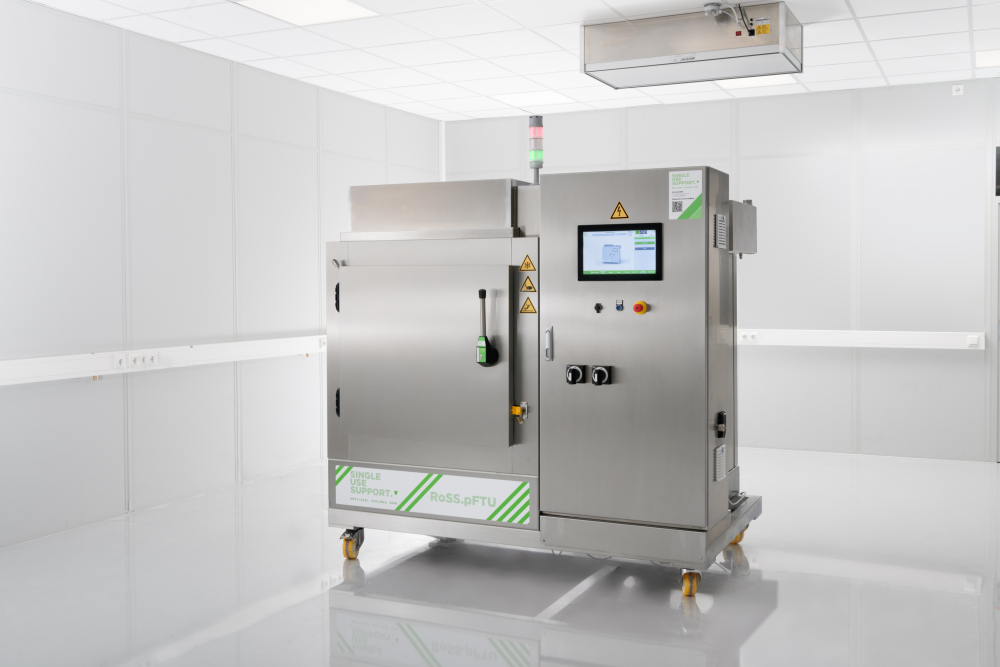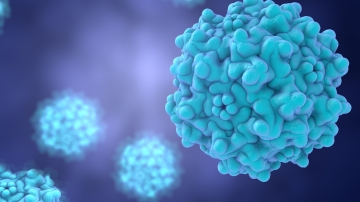Freezing & thawing viral vectors: Best practices
Table of contents
ShowViral vectors and specifically Adeno-Associated Virus (AAV) vectors have gained significant prominence in gene therapy and biotechnology research due to their ability to efficiently deliver genetic material into target cells.
Proper handling of viral vectors during storage, freezing, and thawing is crucial to maintaining their integrity and efficacy. In this article, we will explore best practices for preserving viral vectors, ensuring their stability, and maximizing their potential for various applications.
Why proper freezing & thawing matters
AAVs and other viral vectors are sensitive to environmental conditions, and uncontrolled handling can lead to degradation, loss of infectivity, and reduced therapeutic efficacy. Using controlled-rate freezing & thawing solutions help ensure can help ensure the reliability and success of applications with viral vectors.
Optimal temperature ranges for AAVs
Maintaining precise temperature control is vital for the stability and functionality of viral vectors. Viral vectors are best stored at ultra-low temperatures, typically at or below -80°C. This recommended temperature applies to the long-term storage of all viral vectors, such as adeno-associated viral vectors (AAVs), adenoviral vectors (AVVs), lentiviral vectors (LVVs) or retroviral vectors (RVVs).
Frequent freeze-thaw cycles should be avoided whenever possible. Each freeze-thaw cycle can lead to a reduction in AAV vector titer and infectivity, so it's essential to plan ahead and aliquot samples appropriately.
Storage at -20°C to +4°C is only recommended for short-term use. During processing in the laboratory, it is important to keep temperatures at a constant level.
This makes it clear that viral vectors must be frozen at ultra-low temperatures on their way to the next production site or final use. Best practices to do so, are presented in the following chapters.1
Best practices to freeze viral vectors
Effective techniques for freezing viral vectors such as adeno-associated virus vectors can mean the difference between successful experiments and compromised results. In this chapter, we offer best practices for viral vector freezing, highlighting proper pre-freezing preparation, such as aliquotation of single-use bags or medical devices and actual freezing techniques using plate freezing. As industry experts in the field of freezing drug substances, we specialize in providing customized solutions based on single-use technology, that facilitate the seamless scaling of the freeze-thaw process seamlessly from clinical studies to large-scale production.
Aliquotation in samples
Aliquotation is a necessary practice for several reasons. Dividing a viral vector stock into smaller aliquots helps minimize the number of freeze-thaw cycles, a critical factor in maintaining vector stability and efficacy.
A recommended approach is an automated closed filling process based on single-use systems. Closed systems like Single Use Support’s RoSS.FILL for small volumes eliminate the risk of external contamination, ensuring the integrity of the viral vectors throughout the aliquotation procedure.
Read more about best-practices in filling viral vectors in the article about aliquotation and homogenization of viral vectors.
Plate freezing
Plate freezing proves to be a best practice to freeze viral vectors and specifically to freeze AAV. Unlike blast freezing, which uses air to achieve low temperatures, plate freezing relies on direct contact with cooled surfaces, typically metal plates.
One of the most notable advantages of plate freezing is its precision in freezing. By adhering to specific setpoints for product-tailored freezing, plate freezers empower with cGMP-driven standardization and reproducibility of freezing kinetics. This level of control is indispensable in maintaining the consistent quality of AAVs.
Moreover, plate freezers enable rapid and controlled freezing, a critical factor in reducing the occurrence of cryoconcentration. Cryoconcentration results in the emergence of crystals and ingredient separation over time. Rapid plate freezing mitigates this issue by promoting high homogeneity in liquids.
Cost-efficiency is another advantage of plate freezing technology, primarily due to its lower energy consumption. Rather than cooling the surrounding air, plate freezing systems ensure that items come into direct contact with cooled stainless steel surfaces.
As highlighted in the interview with our expert Alexander Fuchs, advanced solutions are also prone to sustainability in freezing: Sustainable freezing in biopharma.

We furnish both our plate-based freeze and thaw platforms along with our ultra-low temperature storage freezers with natural gases.
Alexander FuchsSingle Use Support acknowledges the benefits of plate freezing for biologics and offers a comprehensive range of freeze-thaw platforms, including various sizes of the RoSS.pFTU. For laboratory work and lower volume freezing of AAVs, the RoSS.pFTU Mid-Scale is the recommended variant, as it can be used to freeze small single-use bags in the small single-use shell (volumes less than 250mL) as well as several large single-use bags. Best product stability results are provided for viral vectors up to 100L.

Efficiency improvements with single-use technology
Single-use bioprocessing is a best practice when it comes to freezing Adeno-Associated Virus vectors, with a focus on enhancing efficiency. Single-use technology offers advantages, including easy scalability, heightened efficiency, and reduced margin for errors.
Single Use Support offers single-use bags designed to be frozen within their respective single-use shells, amplifying the benefits mentioned before. Scalability is streamlined as single-use systems can be effortlessly adjusted to accommodate varying batch sizes, spanning from laboratory-scale experiments to large-scale production. This adaptability not only enhances efficiency but also minimizes production downtime.
Read more: Adeno-associated virus production and efficiency improvements with single-use technology
Best practices to thaw viral vectors
Just as precise freezing, thawing viral vectors demands the same attention to detail. A best practice in this regard involves controlled and consistent thawing, performed with the plate-freezing platform.
Thawing with Single Use Support’s plate-based freeze thaw platform facilitates gentle and uniform heat transfer between the frozen viral vectors and the surrounding environment, minimizing the risk of damage and ensuring the vectors' stability and efficacy.
End-to-end solutions for safe handling of AAVs
In preserving AVV vectors and other viral vectors, Single Use Support positions itself as experts in this field, providing end-to-end cold chain solutions that take advantage of single-use technology in the context of plate freezing and ultra-cold storage.
These solutions are not only highly efficient but also fully compliant with current Good Manufacturing Practices (cGMP). With closed, automated processes, scalable platforms, and sophisticated monitoring, the best-in-class process solutions ensure the integrity and reliability of viral vectors throughout their lifecycle, from freezing and storage to thawing.
- UNC Vector Core: Safety & Handling, https://www.med.unc.edu/genetherapy/vectorcore/safety-handling/, Published 20.09.2023










